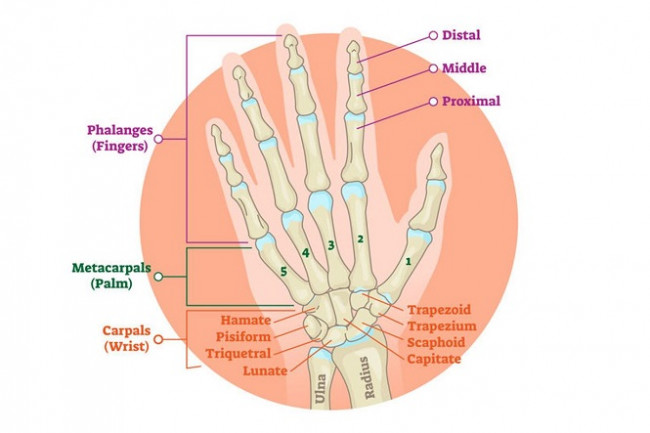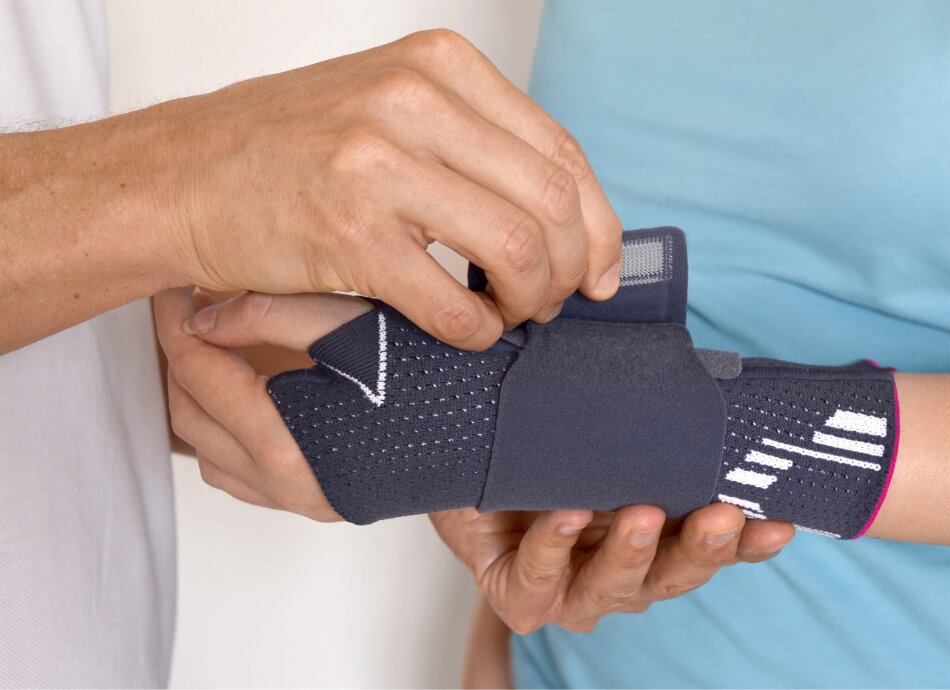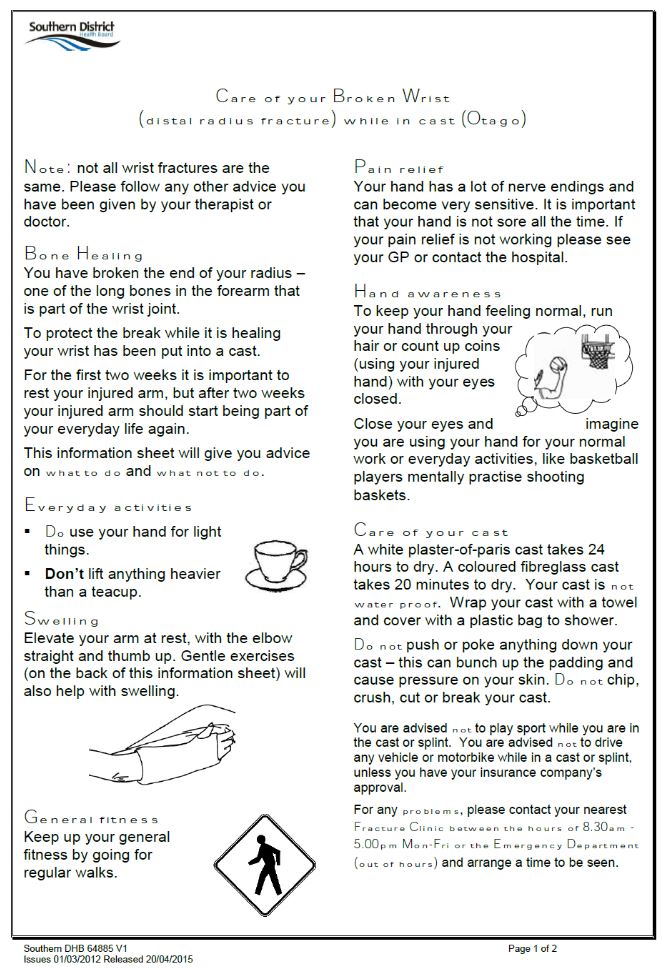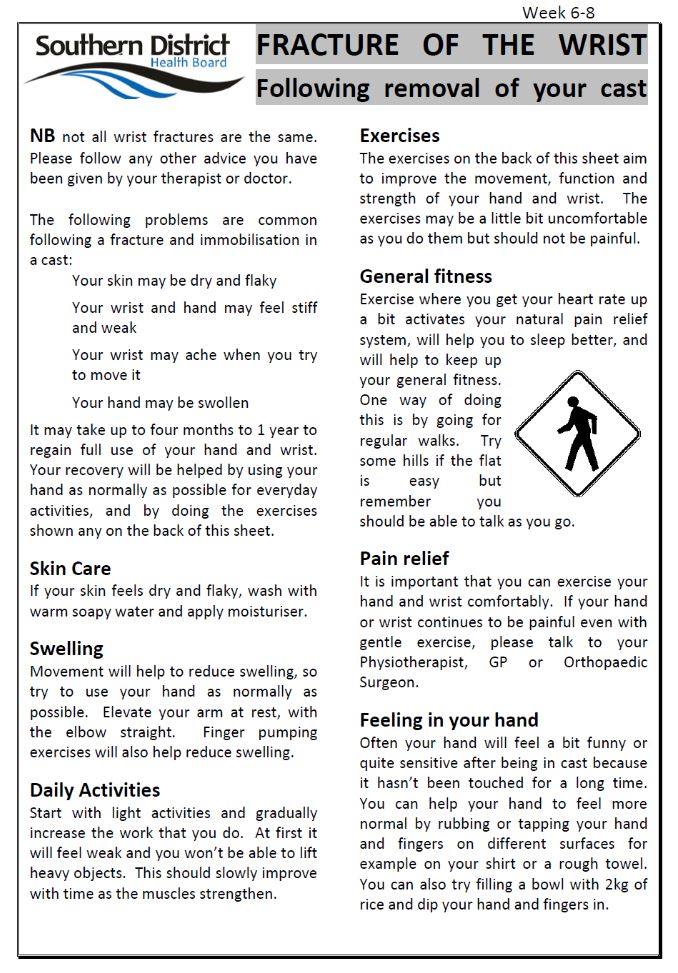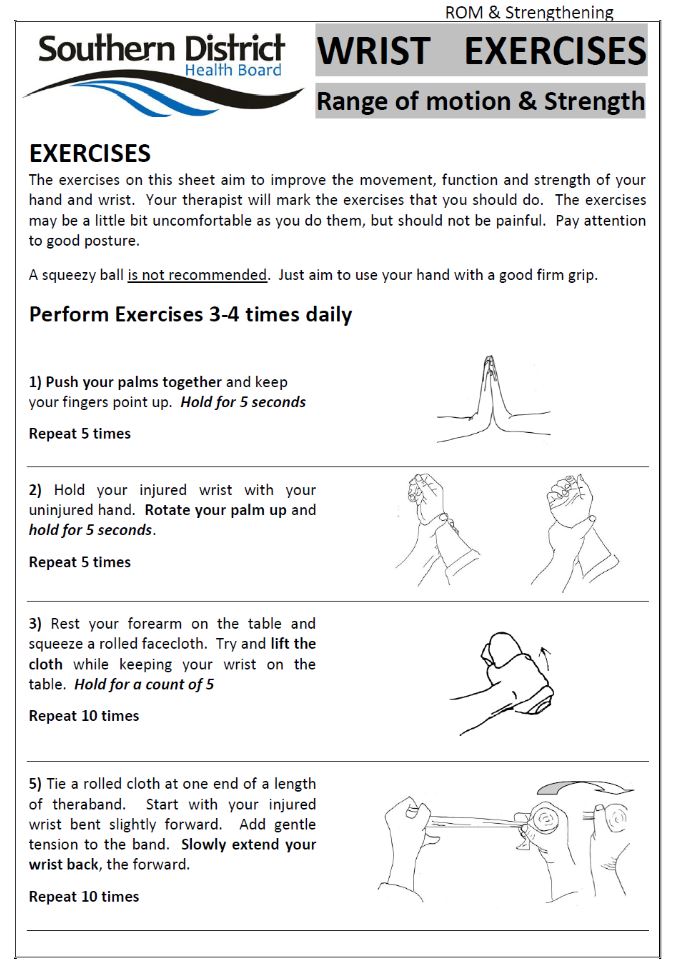How is a broken wrist diagnosed?
If you think you may have a broken wrist, you should see a doctor straight away.
Your doctor will assess your general condition, as well as the seriousness of your injury. They will ask about how the injury happened, any symptoms and your medical background.
The most common way to diagnose a fracture is by an x-ray. These show the type of break and its location within the bone. Sometimes, a wrist fracture is hard to see on an x-ray. In that case, you may get a repeat x-ray after a week or more, or have a CT scan or MRI scan, depending on what the doctor thinks is most useful.
How is a broken wrist treated?
Treatment of a broken wrist aims to put the broken bones back together so that the bone can heal properly and you get normal movement of your wrist back.
The treatment you receive depends on how bad the break is. Other factors that affect your treatment include:
- the type of fracture
- your age
- whether the bones have moved or been displaced
- whether the bones break through your skin
- the number of bone fragments from the fracture
- your job or usual activities.
If you have a minor fracture, you will usually be treated with a cast or splint to hold your bones together and support your wrist while it heals.
If you have a more serious fracture, your doctor will try to realign the bones together, either manually using hands or through surgery to insert pins, plates or screws to hold your bones in place.
In both cases you will be given painkillers and be advised on the care following treatment. This may involve physiotherapy or hand therapy.
